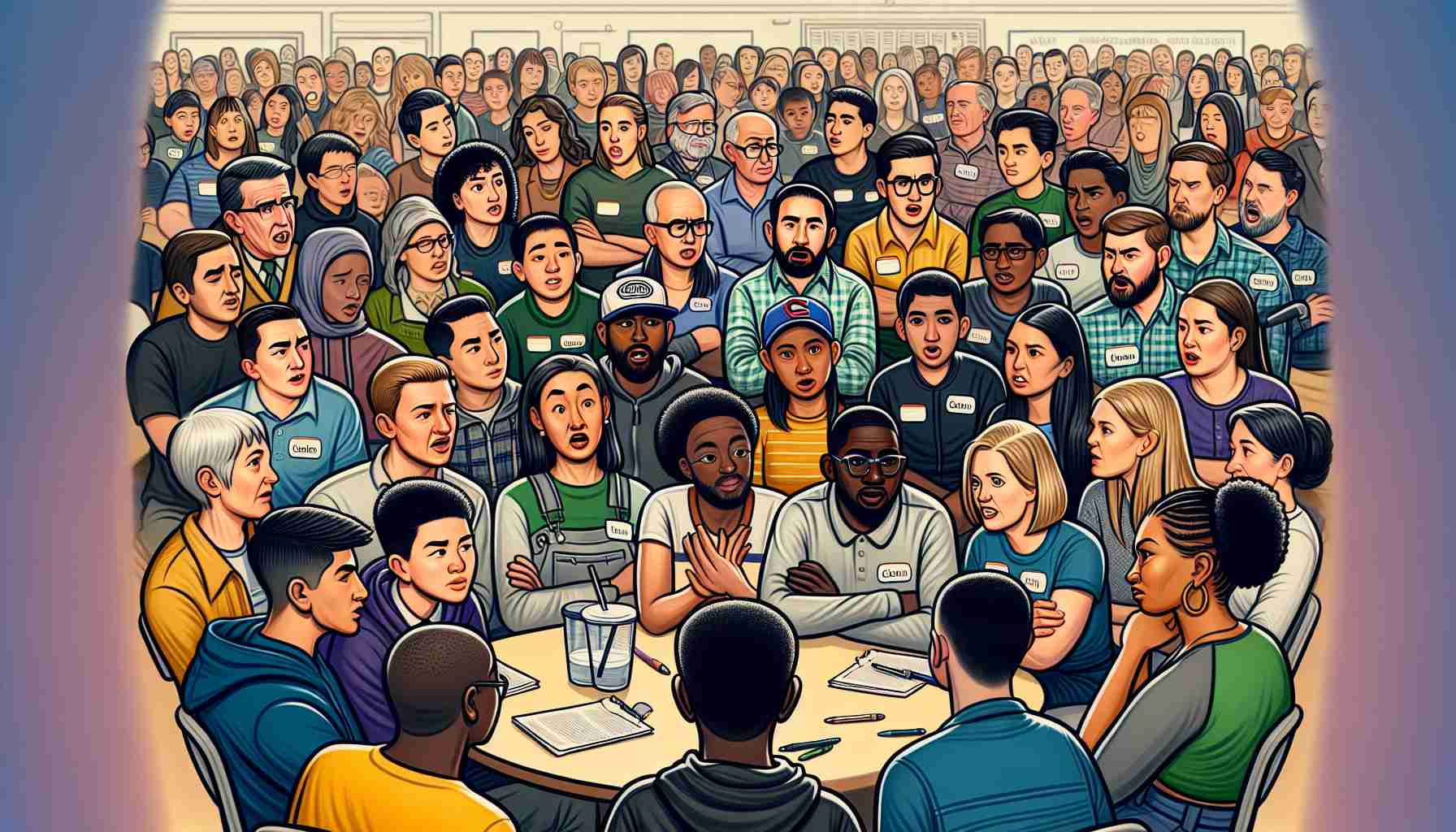A recent board meeting in the Cupertino Union School District saw significant tension as both supporters and opponents of an LGBTQ+ inclusive curriculum gathered. While approximately 20 advocates held signs promoting safety for LGBTQ+ students and teachers, a smaller group of eight protested against what they called inappropriate gender discussions for young children.
The controversy began when a nonbinary teacher at Dilworth Elementary School was placed on leave after community backlash regarding classroom materials, including a poster featuring various pronouns and a book depicting boys in skirts. Critics claim the teacher exceeded age-appropriate curriculum guidelines, leading to an ongoing investigation. The Cupertino Education Association has expressed strong support for the teacher, emphasizing the need for inclusive environments.
As tension rises, local advocates stress the importance of clear curriculum guidelines. They argue that the policies currently in place do not adequately support LGBTQ+ issues outside the sexual education framework. Observers point out that how this situation is resolved could influence broader district policies regarding inclusivity in education across the county.
Community members are divided, with some believing discussions about gender identity should be minimized in early education. Meanwhile, others advocate for comprehensive education, insisting that understanding diversity is crucial from a young age. The school district has stated its dedication to creating a welcoming environment for all identities, indicating that the upcoming board meeting on October 17 will address the controversial issues at hand.
Effective Strategies for Supporting LGBTQ+ Inclusivity in Education
In light of the recent events surrounding the Cupertino Union School District’s discussions on LGBTQ+ inclusive curriculum, it’s essential to explore ways to promote inclusivity and understanding in educational settings. Here are some tips, life hacks, and interesting facts that can help educators, parents, and supporters navigate this complex topic.
1. Foster Open Dialogue
Encouraging open conversations about identity and diversity in classrooms can facilitate understanding among students. Creating a safe space where children feel comfortable discussing their feelings and questions can lead to greater awareness of LGBTQ+ issues.
2. Incorporate Diverse Literature
Utilizing books that feature diverse characters and stories can be an effective way to introduce concepts of gender identity and expression. Stories that include LGBTQ+ protagonists can help normalize differences and promote empathy among young readers.
3. Host Workshops and Training Sessions
Schools can benefit tremendously from organizing workshops for teachers and staff on LGBTQ+ topics. These sessions can provide educators with the necessary tools to handle sensitive discussions and create inclusive curricula that honor all students’ identities.
4. Utilize Age-Appropriate Curriculum
It is crucial to ensure that educational materials are age-appropriate. Curriculum developers should work alongside LGBTQ+ advocates to create lesson plans that introduce concepts of gender and sexuality at suitable developmental stages, helping children understand diversity without overwhelming them.
5. Create Support Groups
Establishing support groups for LGBTQ+ students can make a world of difference. These groups can provide a safe haven for sharing experiences, forming friendships, and receiving support from peers who understand the challenges they face.
Interesting Fact: According to a study by GLSEN (Gay, Lesbian, and Straight Education Network), students who report feeling safe at school are more likely to be engaged and perform well academically.
6. Engage the Parent Community
It’s crucial to involve parents in the discussion about inclusivity and diversity. Schools can host informational nights where parents learn about LGBTQ+ topics, ask questions, and voice their concerns in a constructive environment.
7. Stay Updated with Research and Best Practices
Educators should continuously educate themselves on the latest research related to LGBTQ+ education. Following organizations dedicated to diversity in education, like the Human Rights Campaign, can provide valuable insights and resources.
Supportive Resources: Numerous resources are available for schools looking to enhance their LGBTQ+ inclusivity efforts. For more information, you can explore Human Rights Campaign and GLSEN.
Ultimately, promoting inclusivity in education is not just an obligation but an essential step towards fostering understanding and acceptance among the next generation. As communities grapple with these discussions, it’s vital to remember that every child deserves a safe and supportive learning environment.
